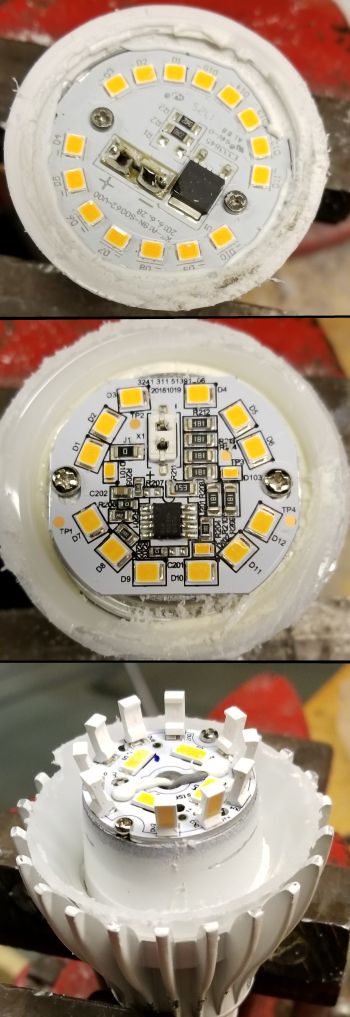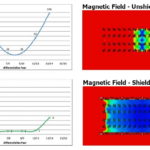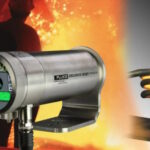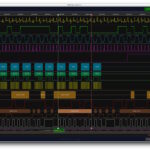A one-year burn-in test helps refute a small piece of fake news about LED bulbs.
We’ve torn down a number of LED bulbs over the years to analyze their content and design strategies. But when we published some of our findings a little over a year ago, we got this missive in the comment section:
In the end models after 1 year diodes produce 50% of initial light. If not dead.. Additional phosphor is transparent color is bluish. temperature is near of burn. Please make leds life easy they are good and for ever if work at 50% from beginning. I always open the lamps and correct power. If not possible -divide leds to two parallel branches. If not possible just connect lamps in pears serial and have 80% of each.
A couple of claims decipherable from this post is that LEDs lose half their light output after a year and their output shifts toward the blue part of the spectrum. Both these assertions are easy to disprove using published data from LED manufacturers. And when the Dept. of Energy tested LEDs, they found LED lights actually shifted in color over time less than other lighting technologies they tested (https://www.energy.gov/sites/prod/files/2017/04/f34/lsrc_colorshift_apr2017.pdf ).
Nevertheless, there is a segment of the population that doesn’t believe anything their government says and is suspicious of data generated by private companies trying to sell products. So in the interest of serving as an impartial source of LED data, we undertook a one-year burn-in test of three different LED bulbs. That one-year test recently wrapped up.
The bulbs we used came from EcoSmart, Sylvania, and FEIT. All were 60-W equivalent bulbs that were among the top ten highest rated LED bulbs by Consumer Reports. Beginning on Feb. 11, 2019 they sat undisturbed, lighting an unoccupied room 24/7. Our only interaction with them during that time was peeking in occasionally to make sure non of them had burned out. None did.
To do scientific measurements of light output requires a piece of test gear called an integrating sphere radiometer. This is basically a big spherical chamber whose internal surface is reflective white. The light from a bulb placed inside the sphere strikes the reflective walls, undergoes numerous diffuse reflections, then gets measured by a detector.
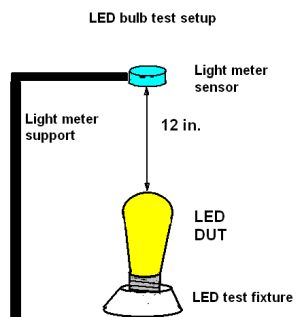
A rough diagram of our LED bulb test setup.
We don’t have an integrating sphere at our disposal. But we felt we could still get meaningful data because we were merely interested in before and after readings. All we had to do was measure the output of our bulbs in a test fixture, then perform the same measurement under exactly the same conditions one year later.
Our before-and-after measurements both took place on the same workbench. The environment around the bench was as close as we could muster to what it was one year earlier, but there could easily have been a few minor differences that contributed to some measurement error.
To gage light output, we employed a light meter called an LT45 made by Extech. It’s normally used for measuring and optimizing environmental light levels in places like office buildings, manufacturing plants and schools. Light meters like this one are used to verify regulatory compliance with local public safety codes and OSHA workplace lighting dictates.
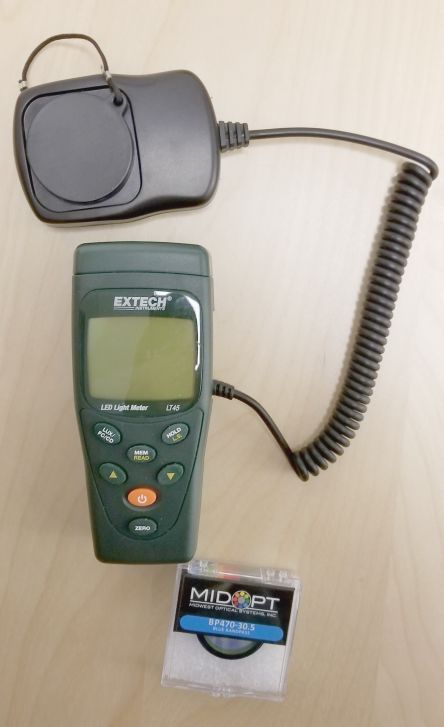
Our Extech LT45 and optical bandpass filter.
To measure whether the LED bulb output had shifted to the blue part of the spectrum, we added an optical bandpass filter which only passes light in the blue-wavelength range, about 450 to 490 nm. Our blue bandpass filter (BP470-30.5) came from Midwest Optical Systems Inc. Its spectral range is 425 to 495 nm with a ±10-nm tolerance.
For testing, we put each bulb in a completely dark room and measured its illuminance using the light meter. The light meter sat one-foot away for measurements with and without the blue band-pass filter. These measurements let us read out how much light these bulbs put out after one year of burn-in. We could also calculate the percentage of blue light in the output from each of the bulbs.
Our results are rather anticlimactic. Two of the 60-W equivalent LED bulbs we measured showed no change in output after their one-year burn-in. The Sylvania bulb was down about 5.5%. That said, it is entirely possible that, given the less than 100% repeatability of our measurement environment, the difference measured in the Sylvania bulb output could easily be within our measurement error.
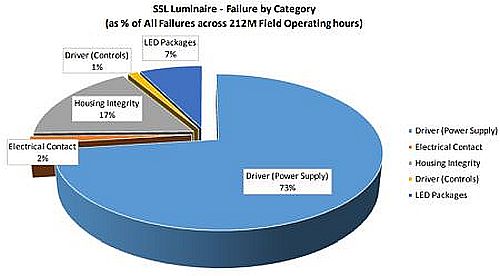
LED bulb failure modes as compiled by Appalachian Lighting Systems, Inc.
The results we saw for blue-light output were about the same as a year ago. In 2019, the average blue light output for the bulbs we tested was 1.4%. After the burn-in, the three bulbs measured slightly below that for an average of 1.03% of their output in the blue-light region.
Now for a few caveats. The bulbs in our burn-in test all sat at room temperature during the one-year test. Also, they remained powered up continuously for the 8,760 hours that comprised the test period. Some other studies have indicated that LED bulbs cycled on and off periodically may have shorter life spans, probably due more to problems in the power supply rather than to effects associated with the LEDs themselves.
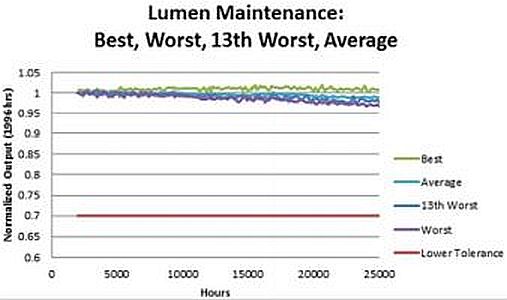
Burn-in data taken by PNNL for the L Prize bulbs.
Additionally, it should be noted that the DoE ran burn-in tests of sorts on LED bulbs back when it conducted the L Prize event for the first practical LED-equivalent to a 60-W incandescent bulb. The data from those tests, conducted around the 2009-2010 time frame, show a drop off in LED light output of only about 5% at worst after a three-year burn-in. The DoE used a test setup similar to ours in that the LED bulbs stayed on continuously over the burn-in period.
From our LED bulb teardown, the LED plates used in the Sylvania (top), EcoSmart (middle) and FEIT (bottom) bulbs.
We doubt that LED bulb output qualities have worsened since the days of the L Prize. This leads us to believe most of the drop in the Sylvania LED bulb output we saw could be attributed to measurement error. Our teardown of these bulbs sheds some light, so to speak, on one possible source of error: The LED layout on the three brands of bulbs are all different. The bulb’s polycarbonate shell diffuses the light to make it less directional, but there is still a possibility that a measurement made off by a degree or two from vertical could yield a different light output reading.
The bigger point, of course, is that even if our measurements were off by a country mile, it’s clear that none of our LED bulbs lost anywhere near half their output. The results are yet another reason why you shouldn’t trust much of the claims you see online.

